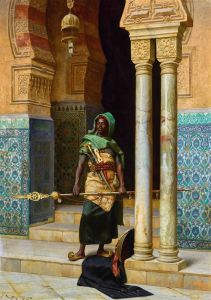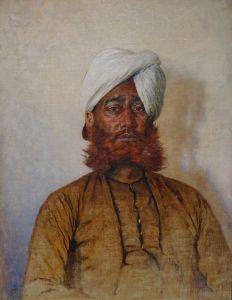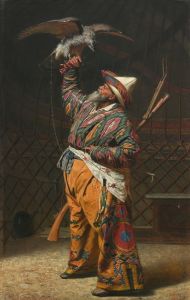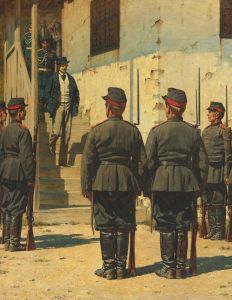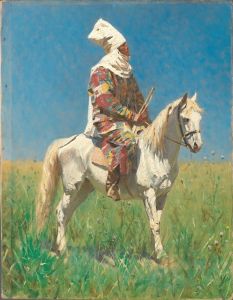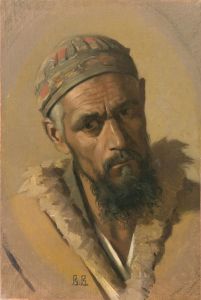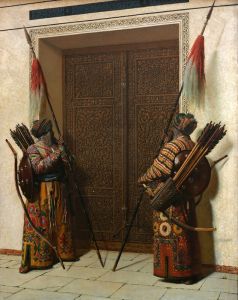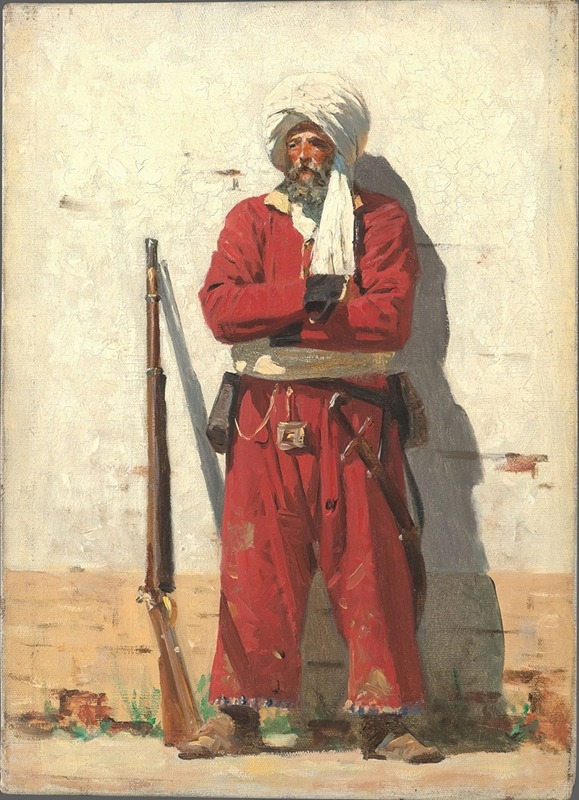
Kokand soldier
A hand-painted replica of Vasily Vereshchagin’s masterpiece Kokand soldier, meticulously crafted by professional artists to capture the true essence of the original. Each piece is created with museum-quality canvas and rare mineral pigments, carefully painted by experienced artists with delicate brushstrokes and rich, layered colors to perfectly recreate the texture of the original artwork. Unlike machine-printed reproductions, this hand-painted version brings the painting to life, infused with the artist’s emotions and skill in every stroke. Whether for personal collection or home decoration, it instantly elevates the artistic atmosphere of any space.
Vasily Vereshchagin was a renowned Russian war artist and traveler, known for his vivid and often controversial depictions of war and its aftermath. One of his lesser-known works is "Kokand Soldier," which reflects his experiences and observations during his travels in Central Asia.
Vereshchagin was born in 1842 in Cherepovets, Russia, and he pursued a military career before turning to art. His military background and firsthand experiences in various conflicts deeply influenced his artistic perspective. In the late 1860s and early 1870s, Vereshchagin traveled extensively in Central Asia, a region that was then a focal point of Russian imperial expansion. It was during this period that he created "Kokand Soldier."
The painting "Kokand Soldier" is part of Vereshchagin's Turkestan Series, which he produced after his travels in the region. This series aimed to document the people, landscapes, and military campaigns of Central Asia. The Kokand Khanate, located in what is now Uzbekistan, was one of the significant Central Asian states during this time, and it was a target of Russian military campaigns.
"Kokand Soldier" depicts a soldier from the Kokand Khanate, capturing the distinctive attire and demeanor of the region's warriors. Vereshchagin was known for his attention to detail and ethnographic accuracy, and this painting is no exception. The soldier is portrayed in traditional Central Asian military garb, which would have included elements such as a distinctive hat, robes, and possibly weapons typical of the era.
Vereshchagin's work often carried an anti-war message, highlighting the brutality and futility of conflict. While "Kokand Soldier" focuses on a single figure, it can be seen as part of his broader commentary on the human cost of war. His paintings frequently depicted the harsh realities faced by soldiers and civilians alike, challenging the romanticized views of warfare that were common in his time.
The Turkestan Series, including "Kokand Soldier," was exhibited in Russia and Europe, where it garnered significant attention. Vereshchagin's realistic portrayal of war and its impact was both praised and criticized, as it confronted audiences with uncomfortable truths. His work was influential in shaping public perceptions of military conflict and contributed to discussions about the ethics of war.
Vasily Vereshchagin's legacy as an artist lies in his ability to convey the stark realities of war through his paintings. "Kokand Soldier" is a testament to his skill in capturing the essence of a time and place, providing a window into the lives of those who lived through the tumultuous period of Russian expansion in Central Asia. Through his art, Vereshchagin continues to be remembered as a powerful voice against the glorification of war.





